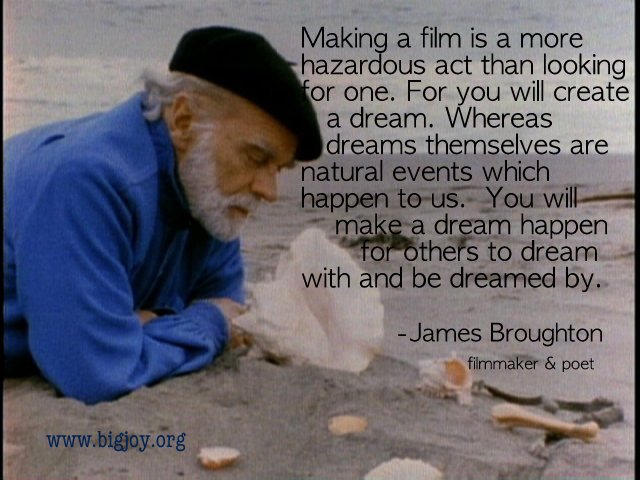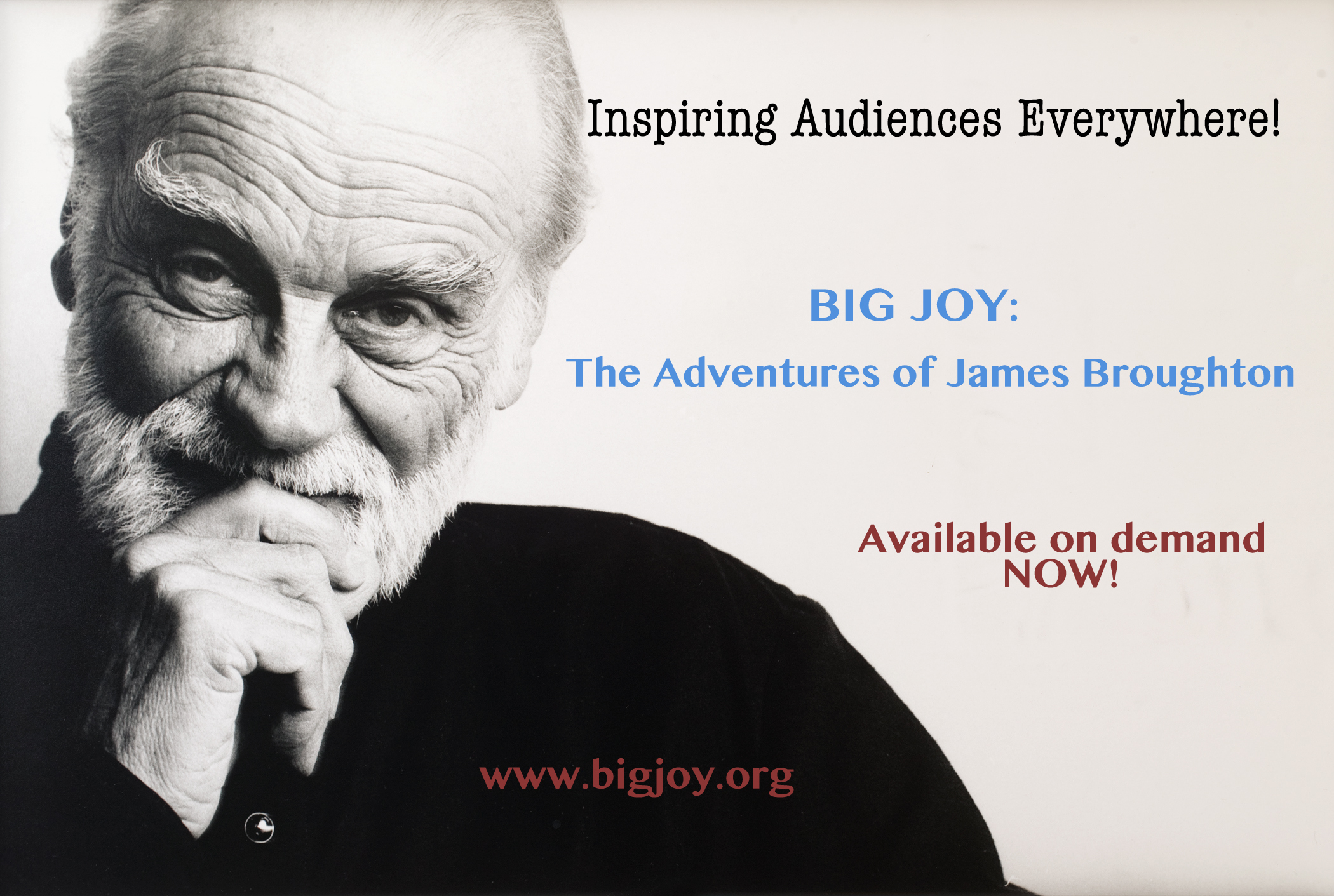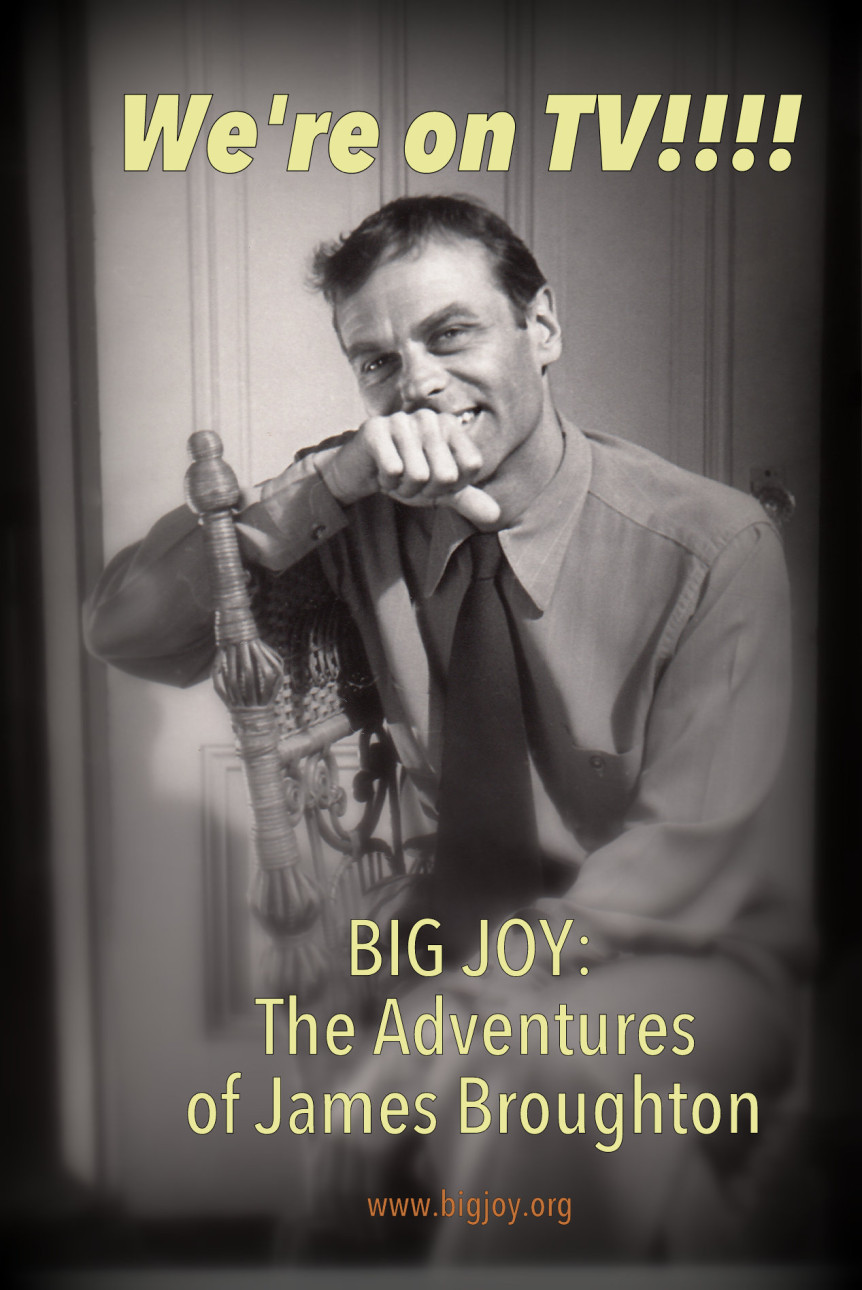Recently BIG JOY has enjoyed a host of TV showings around the country. So what’s the difference between what’s being seen on TV and the original feature length film?
We interviewed Co-Director and Executive Producer Stephen Silha to find out.
So what’s the difference between the Made for TV version and the whole feature length movie?
The tv version is a really shortened version. You don’t get as full a spectrum of depth in the 54-minute version. Still, it’s a lot of fun.
Were there any major pieces that were cut?
Two important pieces come to mind. One was really sad for Eric and me. We had to cut out a whole bunch about James’ death. You don’t get the whole impact of the sacredness and specialness of his death in the TV version like you do in the feature-length film. In real life his passing was so poetic. We even made a mini-video about it it was so striking.
We also have a piece at the beginning of the 82-minute version where performance artist Keith Hennessy describes the era James lived in. He does it in this sort of crazy professor way. That doesn’t appear in the TV version. I miss that piece. He really puts James in context in film, culture, and poetry. You can now also see the longer version of that on You Tube. James Broughton in Context.
We also cut out a bunch of James Broughton’s film “Erogeny” (which you can see online on our YouTube Channel) along with many of James’ other films.
What was the process like editing it?
The 54-minute version was edited by Bill Weber, who was our initial editing consultant and edited our film’s trailers. Bill is so much fun to work with. He’s such a great character with a wonderful sense of humor. He’s a Kansas boy who’s lived in San Francisco most of his life. He somehow brings the innocence of Kansas together with the sexiness of San Fran. He did lots of what I call snipping. Some of those snipped moments gave the 82-minute version more spaciousness, so it’s just much tighter in the TV version. It doesn’t “breathe” as much.
The cutting was all a process between myself, Eric Slade and Bill Weber.
Was it easy to decide what to cut and what to keep and what to take out?
It’s so hard to decide what to take out, because by the time you get to even the 82-minute version you’ve already cut out a lot. Cutting more is like killing your babies!
You have to make decisions about what is absolutely essential to the story. Fortunately Eric Slade is really good at that.
 Initially we did 39 interviews and we only used 20 in the film. And we cut more of those interviews from the 54-minute film.
Initially we did 39 interviews and we only used 20 in the film. And we cut more of those interviews from the 54-minute film.
For example, in the TV version we cut out Robert Haller saying things like, “Broughton had more nudity in that film than anything you could see at the time.”
Oh yeah, and another difference is that the genitalia are pixelated in the TV version. Broughton was famous for the nudity in his films, even though it’s what I would call “innocent” or “natural” nudity. Still, he was the first one in the country to put full frontal nudity on the screen in his film “The Bed.” That had to be altered for TV, of course.
What else do you want to say about the whole thing?
It’s really exciting that we are going to be able to get out to so many people on TV. We don’t make any money from it, but it feels really important to get it out there. Our income comes from people buying the DVD or streaming it from our website. And that piece is important to us because it’s the only way we can keep getting James’s work out into the world. Many of his books are out of print, and very little is digitized yet. The income is what helps us make those sorts of things happen so that people can still have access to the wonderful, life-transforming and life-affirming body of work that James Broughton produced.
Did you always plan to make a Made-for-TV version?
Yes, because our distribution consultant told us early on it was essential to do educational and broadcast distribution. He advised making a 54-minute version that was its own work of art. So we’ve always had it as part of our plan. We’ve had the shorter version for 2½ years, but it’s just now being seen for the first time.
Why are you happy or sad about the whole thing?
I’m super happy that it is going to be available to many many more people who can watch it on public television. I’m sad because it’s not the full impact of the movie, nor does it get the DVD’s 60 minutes of bonus features broadcast. But hopefully it will draw more people to James’ work.
Our intention has always been to “create more joy in the world by inspiring others to ‘follow your own weird,’ using the life, joy, and work of James Broughton as inspiration.” That intention is being served in a big way by public television broadcasts!


